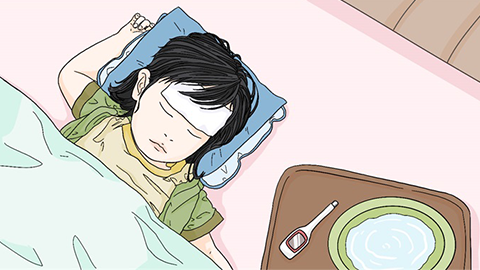How to perform physical cooling for a child with fever
Generally speaking, when a child has a fever, physical cooling methods such as drinking more water, lowering the ambient temperature, appropriately adjusting clothing, warm water sponge baths, and cold compresses can be used. The details are as follows:

1. Drink more water: When a child has a fever, water evaporates faster from their body, which can easily lead to dehydration. Drinking more water helps replenish lost fluids and aids in removing excess body heat through perspiration and urination, thus helping to reduce body temperature. It also helps relieve symptoms such as dry mouth, tongue dryness, and fatigue caused by fever.
2. Lower the ambient temperature: Open windows for ventilation or use equipment such as air conditioners or fans to reduce indoor temperature, thus enabling the child's body to dissipate heat more quickly. However, avoid letting the child sit directly in the path of airflow to prevent chilliness that could worsen their condition.
3. Appropriately adjust clothing: Reducing the child's clothing appropriately can help their body dissipate heat more effectively, thus helping to lower body temperature. Adjust the child's clothing according to the ambient temperature and their comfort level, while maintaining a suitable indoor temperature.
4. Warm water sponge bath: A warm water sponge bath helps remove body heat through evaporation from the skin surface, promoting heat dissipation and thus achieving a cooling effect. The child may sweat more, but their mental state should improve. Continuously monitor changes in the child's body temperature, repeating the warm water sponge bath at intervals until the temperature stabilizes.
5. Cold compress: Apply an ice pack or cold towel to areas such as the child's forehead and neck, but avoid direct skin contact to prevent local frostbite. Each cold compress should not exceed 20 minutes. Allow intervals between applications to prevent damage to the local skin.
However, note that if the child's fever is accompanied by severe symptoms or does not subside, seek immediate medical attention for professional treatment.









